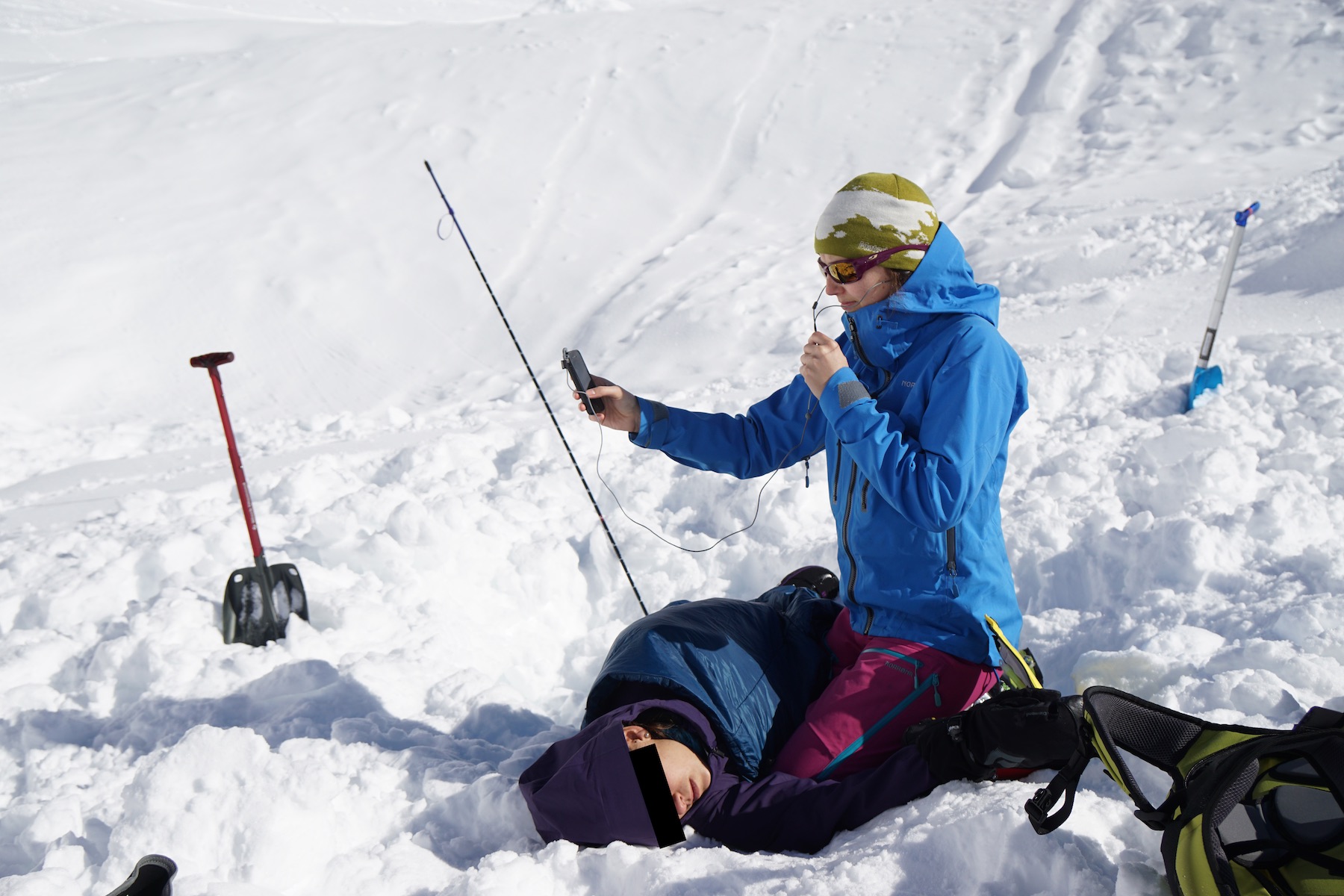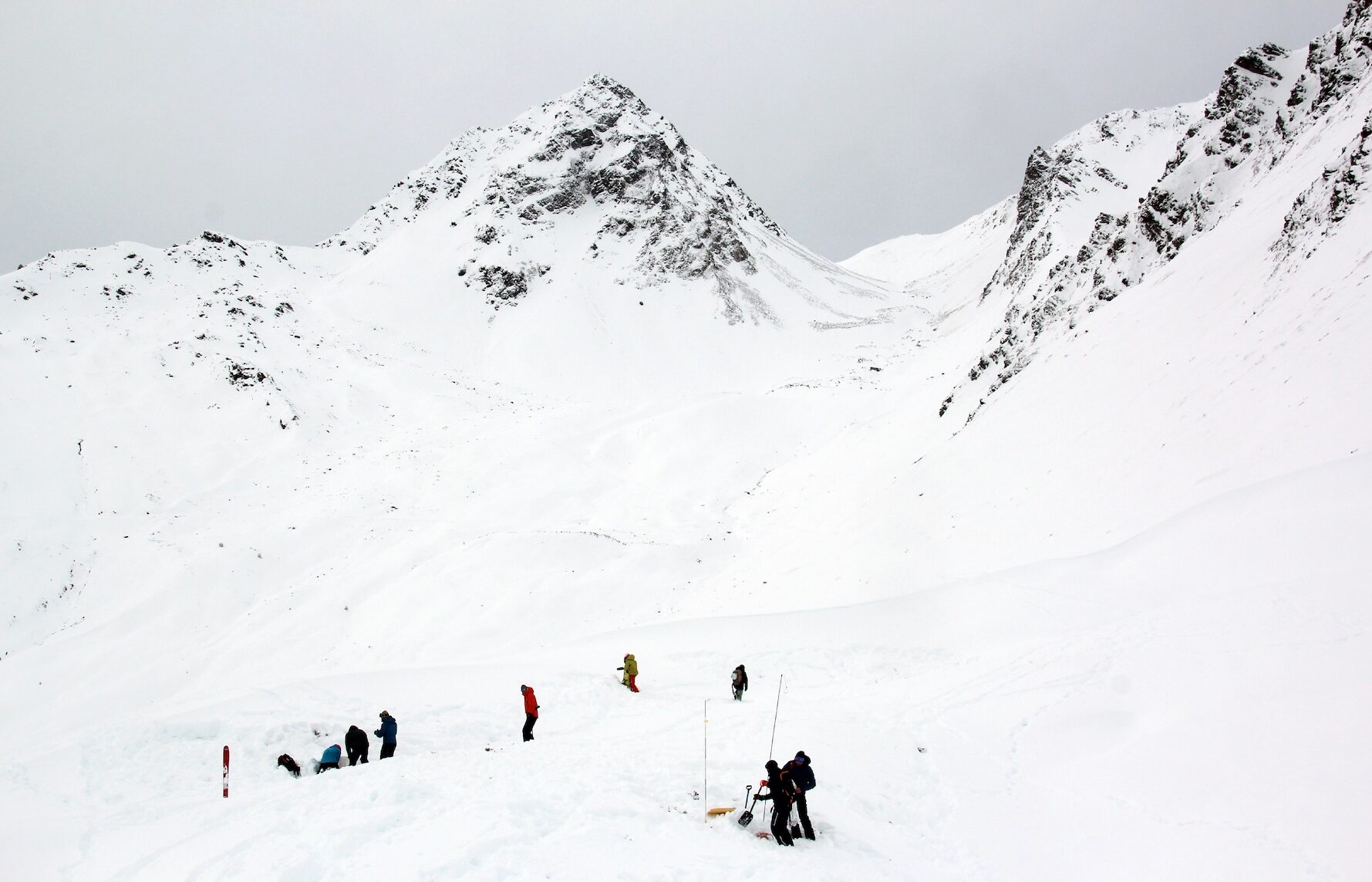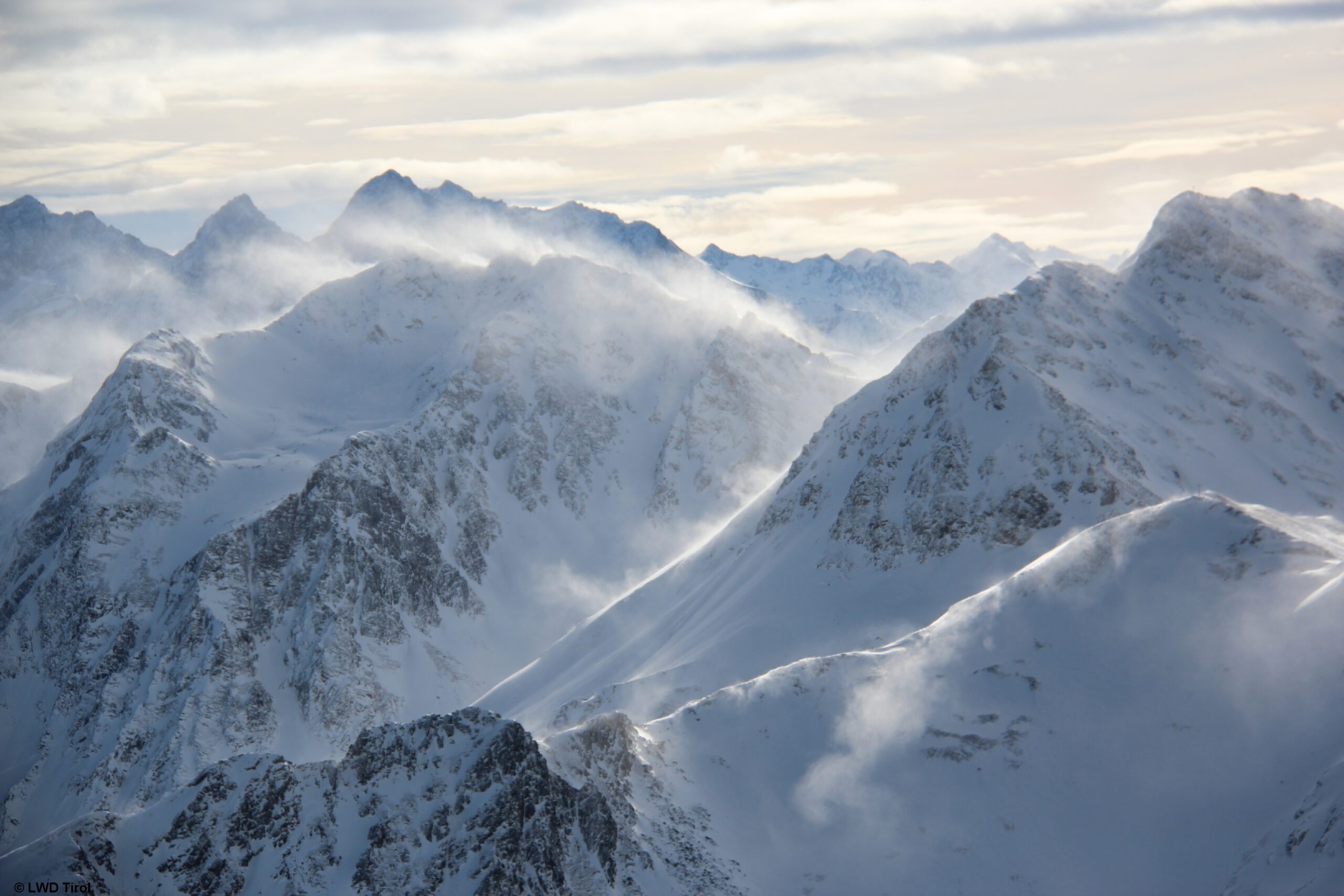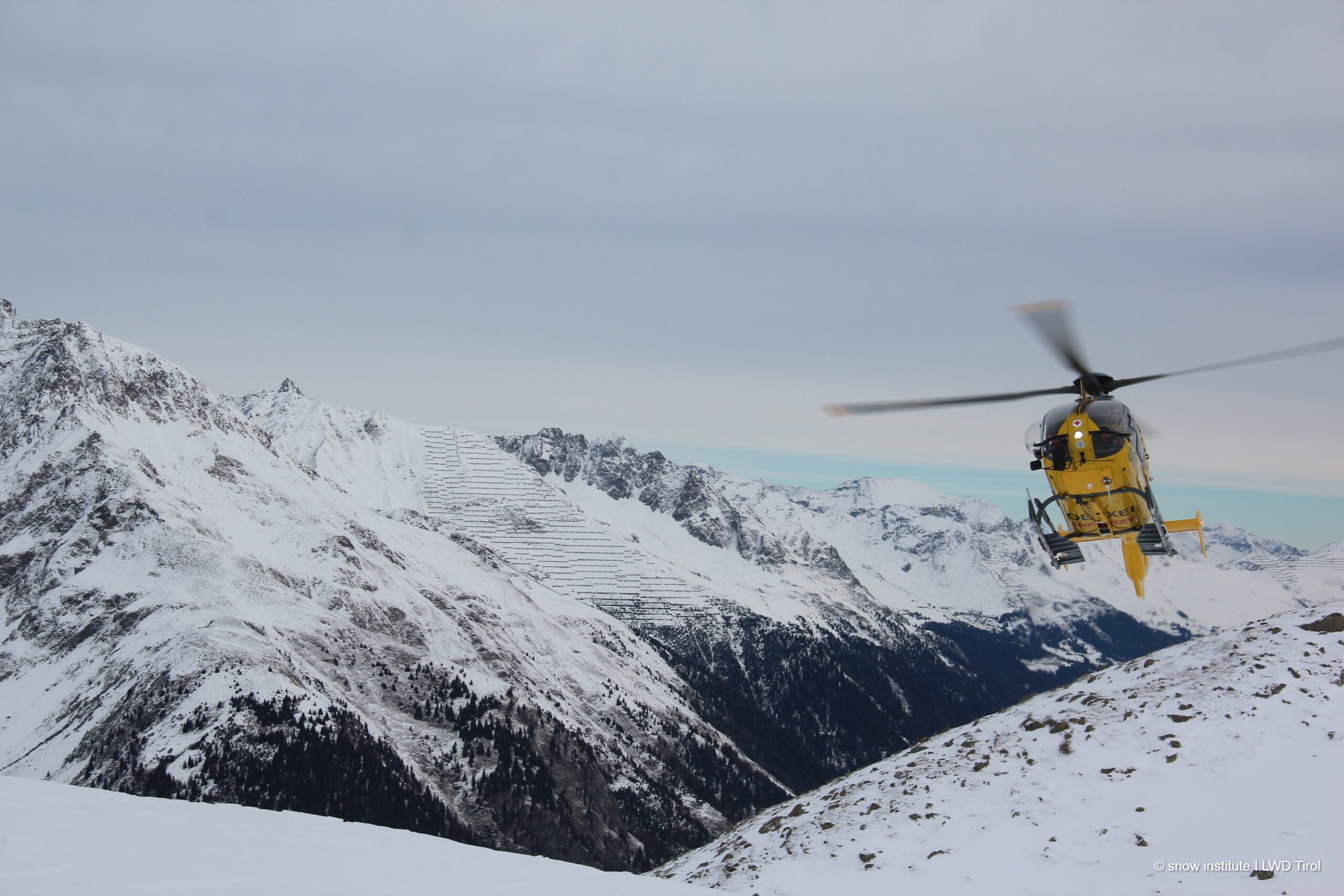
First aid in an emergency situation
First aid for injured persons is based on the priority principle. One of the most important measures, and one that everyone should and can take, is to call for professional
23.10.2024
Even on a normal day on the slopes, something can happen. Regardless of whether you or your group is affected by an emergency or you are involved in an accident – you should be prepared for such an event to occur. The aim is then to carry out the most important rescue measures correctly.
First and foremost, it is important to keep calm and pay attention to your own safety.
It’s easy to become overwhelmed in an emergency situation and lose track of things. Naturally, you are excited, so it is important to regain your composure as quickly as possible in order to assess the situation. Taking a deep breath helps you to regain your composure. You can then work through what you need to do point by point.
Start is always a 10 for 10. “10 seconds for 10 minutes” means taking 10 seconds before each action to make a plan for the next 10 minutes. These 10 seconds are well invested and help to save valuable time later on because the situation has been assessed, the resources checked and a plan of action decided.
Try to grasp the situation and the problem. For example: A skier is lying on a tow path, has lost both skis and is complaining of pain.
Are there any possible dangers for the helper or the casualty? Other winter sports enthusiasts can, for example, ski into the skis of the injured person lying on the slope. If the casualty has fallen off the piste, you must also be aware of alpine dangers (e.g. risk of falling, risk of avalanches).
What about safety for the rescuers and the patient? For example: Can downhill skiers see the accident site and avoid it or not?
After assessing the possible dangers for you and the injured person, it is important to take measures to protect you from further dangers. For example: close off the slope above, collect the skis, etc. The top priority is not to put yourself in any additional danger!
Is a first aid kit or at least a rescue blanket available? Are there several helpers on site or am I alone?
Can the helper handle the situation alone or with the group?
Especially if a danger cannot be defused or it is obvious that the emergency services need to be called, you should make an emergency call immediately.
After the initial assessment, the second step is taken: securing the accident site. As described, this can already happen while another person is making the emergency call.
The necessary safety measures are based on the respective initial assessment and vary from situation to situation.
If there is a danger, for example from other skiers, the accident site must be secured immediately by erecting a ski cross about twenty steps in the direction of the potential danger. For this internationally known marking of an accident site on a slope, the skis are rammed crosswise into the snow to indicate to all skiers that an accident has occurred. A snowboard can also be placed crosswise on the slope with the bindings facing down.
Ideally, a helper – preferably in clearly visible clothing – should position themselves at the barrier to warn other skiers. This helper can also accept requests for further assistance from other people. For example, there are often medical professionals on the slope who offer help.
The time at which the emergency call is made varies from situation to situation. It can be made after the first overview of the situation or later, when the severity of the injury or similar becomes apparent.
Ideally, you should have saved the local emergency numbers or, even better, a regional emergency app on your smartphone.
Before you make an emergency call, however, you should give some thought to answering the control center’s questions:
Once you have dialed the emergency number, the call taker (dispatcher) follows a program and guides you through the relevant questions. If something is unclear, you will be asked further relevant questions and the person from the control center will always remain a contact person for further (first aid) measures.
If there is no contact by cell phoneöIf you are alone with the person who has had an accident (e.g. no net, which is rare in ski resorts), you must call for help immediately. Some rucksacks have a small whistle on the chest strap, which can be used to attract attention very loudly.
If it is not possible to make an emergency call from the accident site, someone must call for help. In the ski area, drive to the nearest lift or rest station and let them know that the piste rescue service is needed. All ski resorts have such a piste rescue service, which is on site and arrives quickly at the scene of the accident on skis or a snowmobile.
Children and young people are also able to learn and implement simple first aid measures. Professional help is usually quickly available at the ski resort, but it may still be necessary to carry out initial measures (e.g. stopping bleeding, correct positioning) in order to help the injured person.
If there is no danger, approach the injured person and make contact. Always approach the injured person from the front, touch them carefully and say “Hello, what happened?”. This will give you a first impression of whether the person is at all responsive, whether they have neurological deficits and whether and where they are in pain.
If the vital functions are all positive, i.e. the casualty is breathing and has circulation, a body check is carried out to identify injuries. If possible, external injuries are treated and the patient is placed in a position that reduces pain.
If the casualty complains of nausea or dizziness after a fall or appears confused or even vomits, this indicates a possible head injury. In this case, the patient should be positioned with their upper body elevated or in a sitting position. In general, this position is recommended for all problems from the chest upwards (e.g. chest injuries, breathing problems, heart attacks and injuries to or in the head).
In patients with severely impaired circulation, elevating the legs can improve the circulatory situation. To do this, the patient is positioned flat on their back with their legs elevated.
Patients who are unconscious or severely unconscious are placed in the recovery position. This is to keep the airways open and to protect the patient from aspiration (vomit or blood flowing into the lungs). As spinal trauma often cannot be ruled out, the patient must be placed in the recovery position in an axial position (without twisting the spine).
The first step is to guide the patient’s knee to the hand on the same side without moving the spine. The patient is then turned onto their side in an axially correct position. Finally, the patient’s mouth is opened and turned towards the floor so that secretions can drain away.
It is often helpful to support the patient’s head by placing the upper hand underneath.
More serious injuries can also occur on the ski slope and further first aid measures must be carried out before the organized rescue team arrives. With the help of the cABCDE scheme, it is easy to recognize the biggest problem of the injured or ill person. You follow a clear pattern – because without A there is no B and without B there is no C. If the patient’s situation changes, you start again at A. If the situation at the accident site changes, e.g. time, weather, resources, the safety and situation is reassessed. A 10 for 10 is a good way to recognize the new situation and act accordingly. Find out more here.
When the piste rescue team approaches, you should draw attention to yourself and give them as much support as possible. The piste rescuers will ask for all the information they need about the course of the accident. Brief information about what has happened and the situation is usually sufficient. Stay on site as a first aider, but don’t get in the way of the rescue team – if they need your support, they will give you instructions.
How good your first aid measures are can determine the outcome of an emergency for the injured or ill person. Even making an emergency call in good time can be an enormously important measure. Anyone who has been familiar with first aid measures from a young age will soon be able to handle them well, and anyone who regularly plays through possible scenarios on the slopes will be able to react confidently and competently in an emergency.

First aid for injured persons is based on the priority principle. One of the most important measures, and one that everyone should and can take, is to call for professional

In order to be able to help in a worst-case scenario – i.e. an avalanche accident with buried and/or injured people – it is important to gain theoretical knowledge and

“Do you think I need a new avalanche transceiver?” is a question often asked by freeriders and course participants. Those who ask this question usually know themselves that the answer

In order to be safe in the mountains, a sound knowledge of the weather and the most common terms in the weather forecast are essential.

Helicopters are often the means of rescue of choice in the Alpine region – if they are available and the external conditions (weather conditions, daylight, etc.) permit their use.

As soon as the first snow falls, the motto is: grab your skis or board and make the first tracks of the season in the snow on the glacier or in the backcountry. Those who

More than half of all people involved in avalanche incidents suffer no or only minor injuries. Around 32 percent of the people involved are seriously injured, and the death rate of people who are buried (regardless of the burial depth) is around 13 percent.

Snow is a form of frozen water. It consists of many small ice crystals that form into snowflakes.
Topics
Legal information
All graphics, images and texts on the entire site may be downloaded and used in accordance with our rights of use.